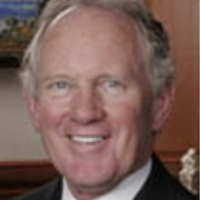Republican Candidate Looks for that Elusive Independent Sweet Spot
 Newly independent Bruce McPherson
Newly independent Bruce McPherson
Locked in tight runoff with a Democratic opponent for a seat on the Santa Cruz County Board of Supervisors, former Republican Secretary of State Bruce McPherson sought to shed the most negative image attached to him: his party affiliation.
McPherson joined a growing number of Californians who identify themselves as independents. The percentage of registered voters calling themselves independent more than doubled between 1990 and 2010, from 9.1% to 20.2%, according to the Public Policy Institute of California (PPIC). Republican ID dropped from 39.3% to 30.8% and Democrat ID fell from 49.5% to 44.5% during the same period.
The PPIC found that the independents swayed back and forth between GOP and Democratic candidates, backing Republican Governor Arnold Schwarzenegger (54%) in 2006 and Democratic President Barak Obama (58%) in 2008. Surveyed independents said they leaned toward Democrats over Republicans 38%-32%, with 30% of voters denying they lean at all. A plurality of independents (40%) proclaimed themselves moderates, 31% favored a conservative label and 29% said they were liberals.
The most divisive issues seemed to bring out the independents’ inner Democrat. Majorities of independents opposed offshore oil drilling and favored President Obama’s health care initiative, 50%-38%. Independents drifted back toward the Republicans on fiscal matters, such as proposals to strictly limit state spending.
There remains some debate among political scientists as to what constitutes an independent voter, questioning whether self-identification should be a determining factor. After all, a CNN survey in 2010 found that 54% of Tea Party members—the 11% of Americans who said they have given money, attended rallies or taken other “active steps” to support the movement—consider themselves independent. (Forty-four percent declared themselves Republicans and just 4% fessed up to being Democrats.)
The seminal text on independents, The Myth of the Independent Voter, calls them “largely closet Democrats and Republicans” and maintains that there is a clear correlation between the voting record of an “independent” and which way he admits to leaning. When applied to the national electorate, only about 10% of voters are really considered independent.
The rest prefer to obscure their party affiliation for one reason or another. The CNN survey showed that 88% of the Tea Party activists identify or lean Republican and 6% identify or lean Democrat, leaving just 5% pure independents.
–Ken Broder
To Learn More:
With Runoff Looming, Bruce McPherson Quits GOP (by Jason Hoppin, Mercury News)
Bruce McPherson Quits GOP as He Seeks Seat on Santa Cruz Board (by Dan Walters, Sacramento Bee)
California’s Independent Voters (Public Policy Institute of California) (pdf)
How "Independent" Are Independents? (by Mark Blumenthal, National Journal)
- Top Stories
- Controversies
- Where is the Money Going?
- California and the Nation
- Appointments and Resignations
- Unusual News
- Latest News
- California Forbids U.S. Immigration Agents from Pretending to be Police
- California Lawmakers Urged to Strip “Self-Dealing” Tax Board of Its Duties
- Big Oil’s Grip on California
- Santa Cruz Police See Homeland Security Betrayal in Use of Gang Roundup as Cover for Immigration Raid
- Oil Companies Face Deadline to Stop Polluting California Groundwater





